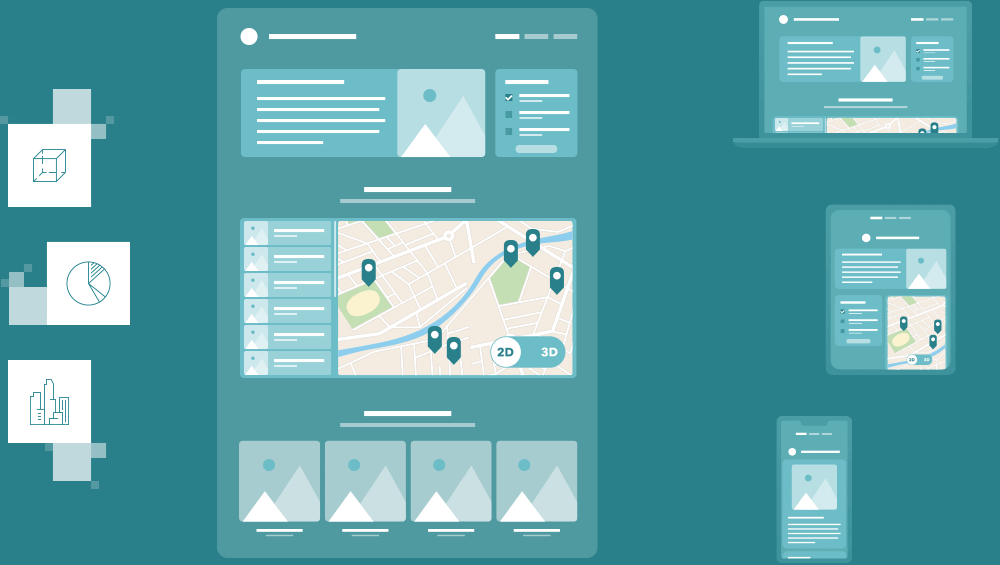Esri first announced ArcGIS Experience Builder in July of last year, and it officially came out of beta in February of this year. While this tool is still pretty new, it’s powerful and will change how you approach making web applications. Read on to find out what Experience Builder is, and what you can create with it.

What is Experience Builder?
At it’s most simple description, Experience Builder is for creating, managing, and deploying web applications. In Esri’s own words, “ArcGIS Experience Builder empowers you to quickly transform your data into compelling web apps”. It has a user experience that is intuitive, integrated, and flexible, allowing you to create applications with the following features in mind:
User Experience: User experience is at the core of Experience Builder. So much so, that Esri even refers to the applications users create as “experiences”. This focus is great for both ArcGIS users who are constructing the experiences as well as the end-users engaging with the applications. It helps to ensure the process of creating applications with Experience Builder, as well as those applications themselves, will be accessible.
Mapcentric or Nonmapcentric: With ArcGIS Web Appbuilder, the focus for applications was all about the map. While Experience Builder continues to give users the option to produce applications designed around a map, it also gives them the ability to focus on applications built around data or functionality that may not require a map.
Modern Interface: The modern interface for Experience Builder is part of what makes it so user-friendly and accessible when creating or updating applications. When adding elements to an experience, users are able to drag and drop various assets (maps, widgets, etc.) into place – no coding required!
Mobile- First Design: Experience Builder’s mobile-first design is part of gives it such a great user experience. Since Experience Builder has adaptive layouts developed from a mobile-first approach, the applications users generate will look good on mobile devices, tablets, and desktops with varying screen sizes and resolutions.

Configurable: When creating a new experience, users are able to start from scratch, or they can use a configurable template. Most of the widgets are also configurable, so users have the control to set their web application to fit their needs. One of my favorite features is that users can save templates they create, and use them to configure new applications in the future!
Single- or Multi-page: Experience Builder gives users the option to create applications that are contained entirely in one page (similar to how Story Maps work) or organize their data into multiple pages. The choice is yours, so you are empowered to use the option that is best for your data, target audience, and use case.
Want to Get Started With Experience Builder?
Right now, Experience Builder is available in two forms. Anyone with an ArcGIS Online account can use it (if you don’t have one, you can sign up for free). While there is not currently a version of Experience Builder available for ArcGIS Enterprise, it is currently in development. Esri has stated that it is coming soon.
If you want even more customization and control, a Developer Edition for Experience Builder is also available.
Where can I find out more?
Experience Builder will continue to grow and change. Whether you want to dig into more information now, or just keep tabs on what’s going on, here are a few resources:
- Esri Blogs on Experience Builder
- Experience Builder’s Help Documentation
- Documentation for Developer Edition
- Experience Builder Community on GeoNet
- YouTube: ArcGIS Experience Builder
- YouTube: Build an Experience from Scratch
- YouTube: Getting Started with Creating Web Solutions
You can also subscribe to our blog for more news on Experience Builder, Esri, GEO Jobe, and all things GIS. Want to know more about what we cover? Check out more of our articles below:


